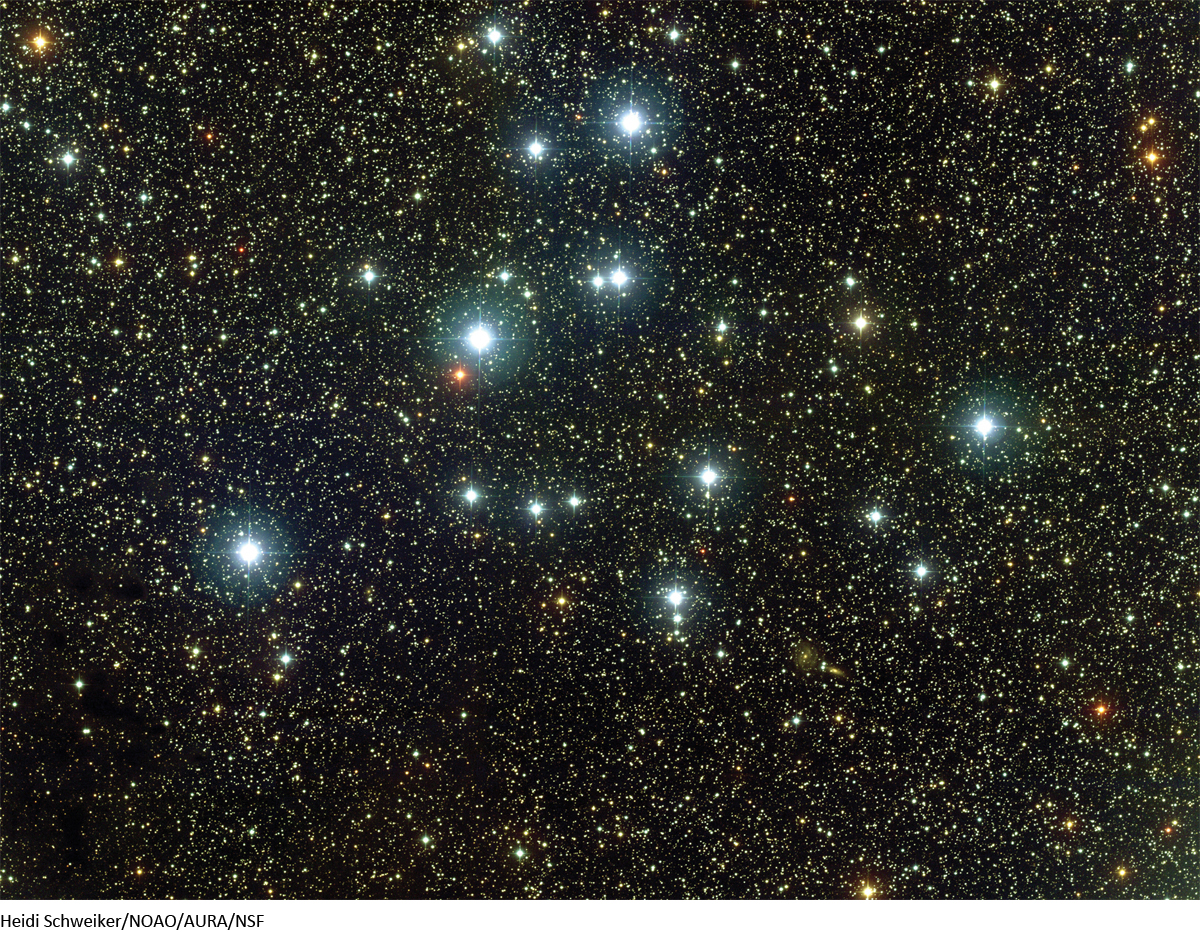227

Observing Properties of Distant Stars
CHAPTER LEARNING OBJECTIVES
By reading the sections of this chapter, you will learn:
- 10-1 Measuring the distances to nearby stars utilizes an effect called parallax
- 10-2 A star’s brightness can be described in terms of luminosity or magnitude
- 10-3 A star’s distance can be determined by comparing its luminosity and brightness
- 10-4 A star’s color depends on its surface temperature
- 10-5 The spectra of stars reveal their chemical compositions as well as surface temperatures and sizes
- 10-6 Stars come in a wide variety of sizes and masses
- 10-7 Hertzsprung-Russell (H-R) diagrams reveal the different kinds of stars
228
To the unaided eye, the night sky is spangled with several thousand stars, each appearing as a bright pin point of light. With a pair of binoculars, you can see some 10,000 other, fainter stars; with a small backyard telescope, the total rises to more than 2 million. Astronomers now know that there are in excess of 100 billion (1011) stars in our Milky Way Galaxy alone.
But what are these distant pinpoints of light? To the great thinkers of ancient Greece, the stars were bits of light embedded in a vast sphere with Earth at its center. They thought the stars were composed of a mysterious “fifth element,” quite unlike anything found on Earth.
Today, we know that the stars are made of the same chemical elements found on Earth. We know their sizes, their temperatures, their masses, and something of their internal structures. We understand, too, why the stars in the chapter-opening image come in a range of beautiful colors: Blue stars have high surface temperatures, while the surface temperatures of red and yellow stars are relatively low.
How have we learned these things? How can we know the nature of the stars, objects so distant that their light takes years or centuries to reach us? Over the next three chapters, we will learn about the measurements astronomers make to determine the properties of stars and infer how they form and change over their life cycles. Our first step is to see how astronomers measure the distances to the stars that are closest to us. We will also take a close look at the Hertzsprung-Russell diagram, an important tool that helps astronomers organize and make sense of the wealth of available information we can learn about the stars. Taken together, we can use these ideas to understand how stars are born, evolve, and eventually die over millions and billions of years.